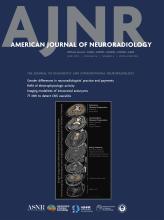Case of the Week
Section Editors: Matylda Machnowska1 and Anvita Pauranik2
1University of Toronto, Toronto, Ontario, Canada
2BC Children's Hospital, University of British Columbia, Vancouver, British Columbia, Canada
Sign up to receive an email alert when a new Case of the Week is posted.
November 22, 2010
Idiopathic Spinal Cord Herniation
- Idiopathic spinal cord herniation refers to herniation of the cord through its dural sleeve.
- Thoracic spine, between T4 to T7 vertebrae, is most often involved.
- Most patients are young to middle-aged adults.
- Brown-Sequard syndrome is the most common presenting feature. Other major symptoms include progressive numbness and decreased temperature sensation in the legs, gait disturbance, pain and incontinence.
- Key Diagnostic Features: Anterior displacement with sharp ventral angulation of the cord at the involved site, and focal increase in the dorsal subarachnoid space are characteristic imaging findings. Contrast-enhanced studies should be performed to rule out any mass lesion including an arachnoid cyst, which can displace the cord ventrally. CT myelogram can be performed to establish the diagnosis, in particular, rule out a dorsal arachnoid cyst.
- Treatment: Surgery











